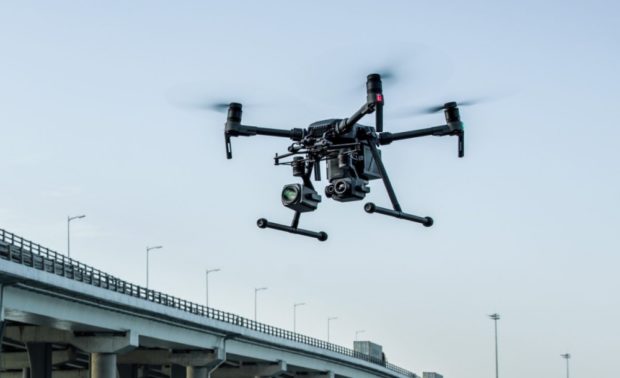The Kremlin discredits China by continuing to import components, military equipment, and dual-purpose goods for its international sanctions. This contradicts the official position of Beijing, which tries to maintain formal neutrality in this war.
It is most likely that Moscow uses military intelligence channels to ensure the purchase of scarce goods and components.
According to our data, the Chinese-based company Shandong Buyun Aviation Technology Co., Ltd plans to deliver 1,000 drones to Russia.
The Hong Kong-based trading company SGGI Limited (3/F, Workingston Tower, 78 Bonham Strand, Sheung Wan, HK), which is most likely connected to Russian intelligence, will handle the order for the manufacture of drones and logistical issues regarding their delivery from the PRC to Russia.
The disassembled drones will be delivered first to Kazakhstan (via the city of Urumqi, Xinjiang Uyghur Autonomous District, PRC), each in a separate case, and then shipped to Russia. Thus, the delivery scheme indicates that the government of Kazakhstan does not prevent, and likely supports Moscow in creating schemes to tackle sanctions preventing arms supplies to Russia. Accordingly, Astana deliberately violates the sanctions regime and export control rules, likely due to the Russians having infiltrated the decision-making system at the highest level.
Contacts with the manufacturer were established back in February 2023, when it was reported that an agreement had been reached to supply 100 drones set to be delivered in April through indirect supply schemes organized by Russia’s defense intelligence. Most likely, the agreements relate to the ZT-180 drone model, which is capable of carrying a 35-50 kg payload. The drone seems to be “a close clone” of the Iranian-made Shahed-136 widely used by Russia in Ukraine. Russia would likely use the ZT-180 much in the same way as it has deployed the Iranian Shahed-131 and -136 “suicide” drones in Ukraine.
Drones developed by Bingo had been used in military exercises and described their technical strength as “first class.” Chinese-made drones would likely receive “battlefield testing” in Ukraine to see whether or not they are actually able to compete with the Shahed-131 and Shahed-136 on military and civilian targets in Ukraine. A similar range for the ZT-180 would mean the Chinese-made drones could quite comfortably hit key targets within Ukraine, including Kyiv.
The similarity of the parameters of Iranian and Chinese drones may indicate that Moscow provides Iranian technology to China to develop similar drones at a favorable price, since Beijing, unlike Tehran, does not have issues with tech components. Thus, the renewal of negotiations with China may indicate Moscow’s frustration over Iran’s production capacity.
We have no confirmation that the delivery involved participation of the Chinese authorities. Most likely, the Russians went directly to the manufacturer and offered a deal through a Hong Kong intermediary firm in the interests of Kazakhstan. Even early this year there were indicators that Bingo could have plans to help establish a production site for the drones in Russia, where up to 100 units could be manufactured per month. However, the plans could be affected by negotiations between Beijing and Washington.
Shandong Buyun Aviation Technology Co., Ltd (Room 813, Building 1B Yaogu, Gangxing road /Shandong/ Rilot Free Trade Zone, Jinan, China), founded in 2015, specializes in the manufacture of drones of various modifications and the training of drone operators. The company has its own projects and patented products. It cooperates with the Nanjing University of Astronautics and Aeronautics. In November 2018, Bingo said it had signed a strategic cooperation agreement with an online platform established by Poly Technology Defense Investment, a unit of state-owned China Poly Group which aims to support military trade and research into military equipment.
According to our estimates, the restrictions imposed by the Chinese authorities on the export of UAVs since September 1 have significantly complicated their supply to Russia and led to a shortage of some components, as well as UAVs weighing over 4 kg. China’s ban on the export of drones that can be used for military purposes also led to the suspension of supplies of products that are not directly subject to restrictions, for example, 30-40kg drones used in agriculture that are not produced in Russia in large quantities.
Russia traditionally tries to circumvent restrictions through third countries, as well as by exploiting the existing gaps in the imposed bans. It cannot be ruled out that some representatives of the Chinese government are aware of the ultimate destination for drone supplies but chose not to interfere. Thus, the deal with Shandong Buyun Aviation Technology Co., Ltd may have been a corrupt bid by Russian intelligence seeking to procure military drones to bypass the Chinese government’s ban. This would allow Moscow to reduce its dependence on Beijing, and intelligence officials to gain profit.
Source: Robert Lansing Institute

